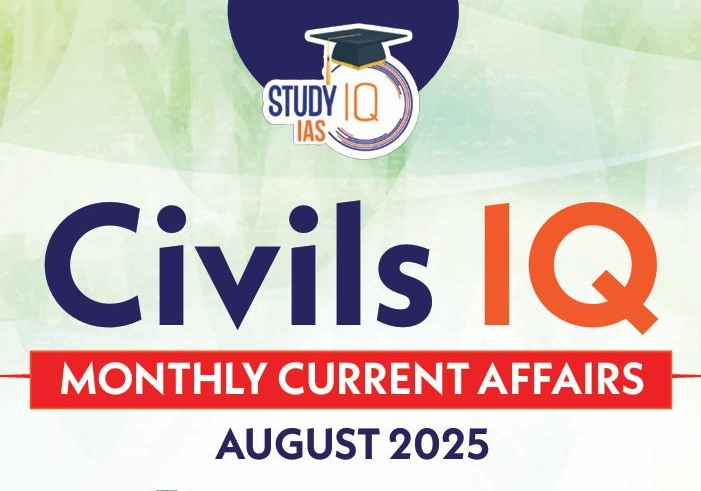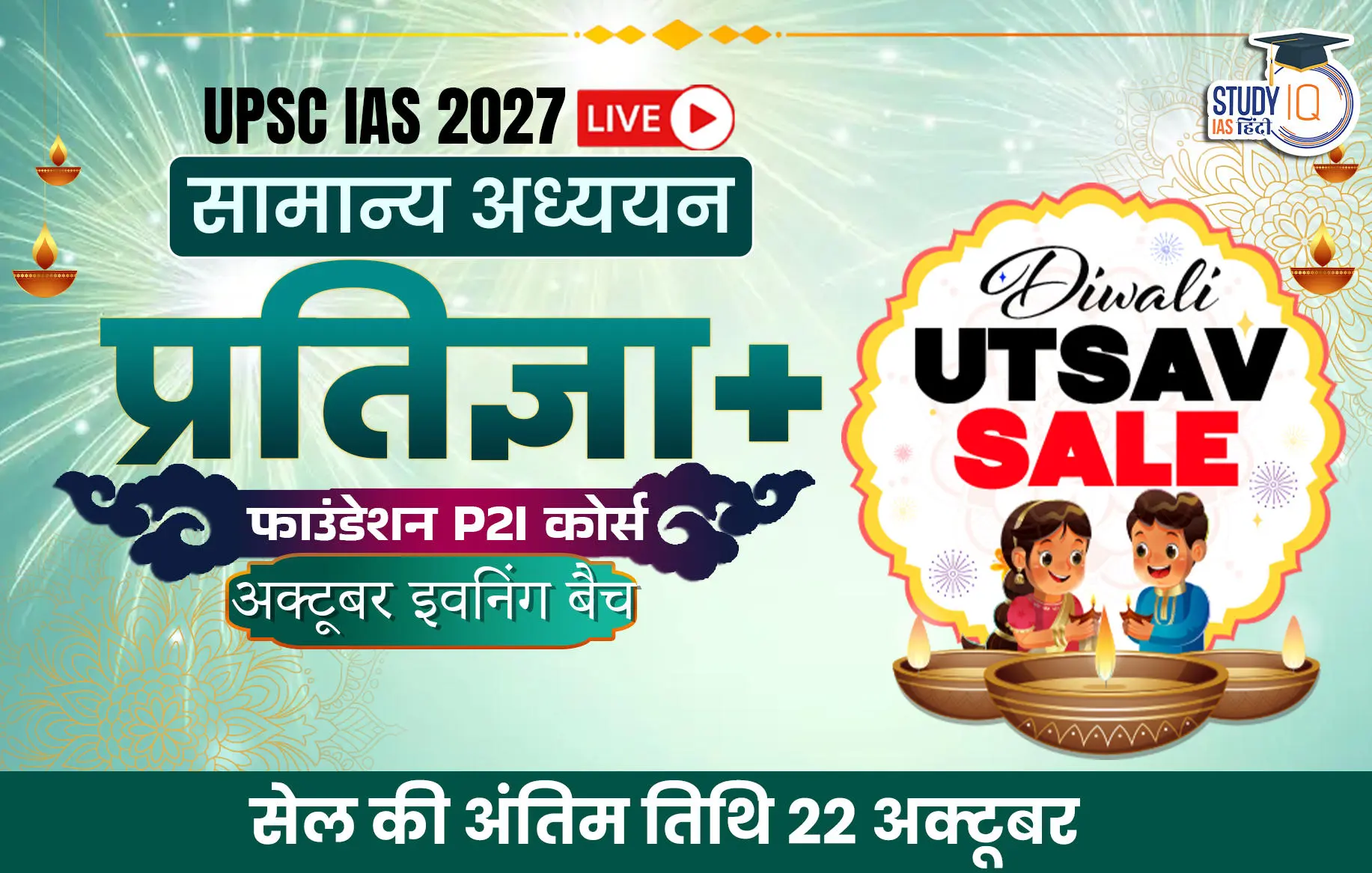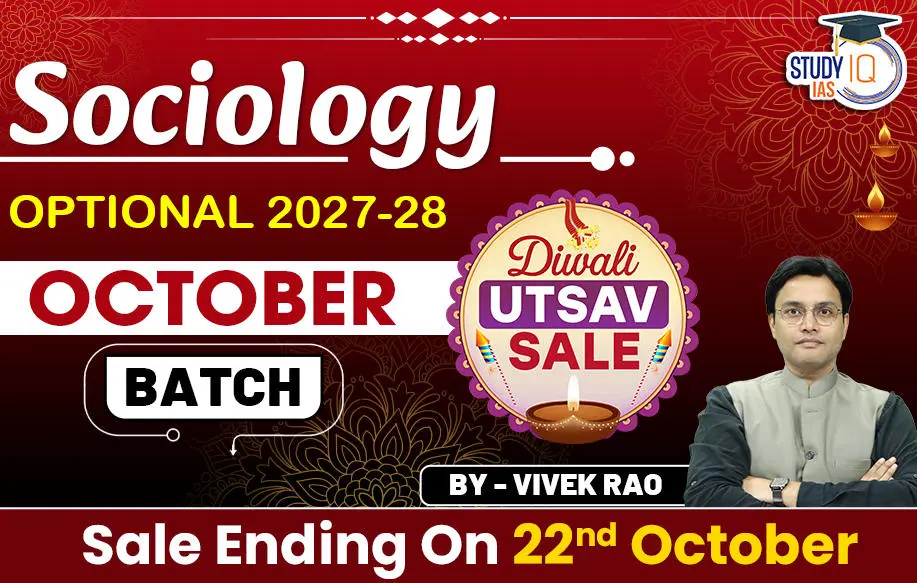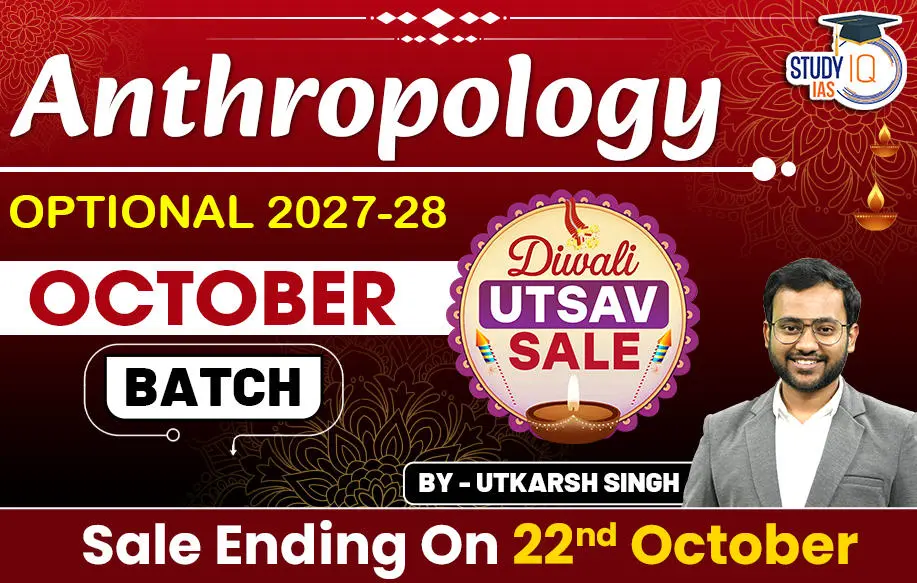Table of Contents
Indian paintings boast a venerable tradition deeply entrenched in the annals of Indian art history. Despite the challenging climatic conditions that have led to the scarcity of surviving early examples, paintings’ significance has endured across ancient, medieval, and modern epochs. The roots of Indian paintings extend back to prehistoric times, commencing with the ancient practice of cave paintings.
This rich heritage has evolved through various mediums, including ceramics, textiles, miniature paintings, and eventually finding expression in modern artistic forms. From the enigmatic cave art to the intricate details of miniature paintings, the trajectory of Indian painting reflects a profound journey through time, capturing the essence of the nation’s cultural and artistic evolution.
We’re now on WhatsApp. Click to Join
Evolution of Paintings in India: Background
The earliest evidence of painting in India can be found in primitive rock paintings at sites like Bhimbetka, Mirzapur, and Panchmarhi. These paintings, dating back thousands of years, offer a glimpse into the artistic expressions of ancient communities.
| Period | Characteristics |
| Indus Valley Civilization |
|
| Gupta Period |
|
| Medieval Period |
|
| Colonial and Modern Period |
|
| Contemporary Era |
|
Throughout its history, Indian paintings have been shaped by religious, cultural, and social influences. Spiritual themes, symbolism, and a connection to ancient traditions remain integral to the vibrant tapestry of Indian art. The legacy of Indian paintings continues to evolve, reflecting the country’s rich cultural heritage.
Classification of Paintings in India
Indian paintings exhibit a diverse tapestry reflecting a rich cultural history. Murals, such as the intricate frescoes in Ajanta caves, convey religious narratives. Miniature paintings, a hallmark of the Mughal era, showcase meticulous details. Paintings on cloth, like Pattachitra and Kalamkari, blend storytelling with vibrant imagery. Tantra art delves into spiritual themes, while Rajput paintings highlight regional diversity with bold colours.
The Bengal School revives traditional forms, and contemporary Indian art explores identity and global issues. Despite climatic challenges, India’s art spans prehistoric rock paintings to modern expressions, weaving a colourful narrative through time and cultural influences.
Prehistoric Paintings
Prehistoric paintings, seen in locations such as the Bhimbetka Caves, Jogimara Caves, and Narsingarh Caves, provide a fascinating glimpse into ancient artistic expressions. These Petroglyphs, featuring diverse subjects and themes, span the Paleolithic, Mesolithic, and Chalcolithic periods, showcasing the evolving colours and sizes of prehistoric artworks.
Petroglyphs in Caves:
- Early artworks created on cave rocks during prehistoric periods.
- Known as Petroglyphs, these paintings showcase primitive artistic expressions.
Prominent Subjects:
- Animals like elephants, rhinoceros, cattle, snakes, and deer.
- Natural components such as vegetation are recurring themes.
Periods:
- Prehistoric paintings are categorized into Paleolithic, Mesolithic, and Chalcolithic periods.
Pigment Minerals:
- Ochre and geru are commonly used pigment minerals.
- Various minerals of different colors contributed to the diverse palette.
Major Themes:
- Group hunting scenes, grazing activities, riding sequences, and more.
- Themes reflect the lifestyle and surroundings of ancient communities.
Evolution of Colors and Sizes:
- Artworks showcase changes in colors and sizes over time.
- Evolution reflects advancements or shifts in artistic techniques.
Examples of Sites:
- Bhimbetka Caves in Madhya Pradesh.
- Jogimara Caves in Chhattisgarh.
- Narsingarh Caves in Madhya Pradesh.
Mural and Cave Paintings in India
Mural paintings in India, dating from the 10th century BC to the 10th century AD, are colossal artworks adorning walls and solid structures. Predominantly found in natural caves and rock-cut chambers, these expansive creations are too large for conventional canvases, contributing to their unique significance.
Major Themes: Hinduism, Buddhism, and Jainism serve as major thematic elements in these murals, providing a visual narrative of religious and cultural tales.
Examples of Mural Paintings Locations
Ajanta Caves, Maharashtra
- Significance: Sculpted in the 4th century AD from volcanic rocks.
- Themes: Encompass human values, social fabric, Jataka stories, Buddha’s life, and intricate flora and fauna patterns.
- Medium: Vegetable and mineral dyes.
Ellora Caves, Maharashtra
- Period: From the 7th century AD.
- Themes: Representations of Buddhism, Jainism, and Hinduism.
- Notable Site: Kailasa temple with diverse religious artworks.
Bagh Caves, Madhya Pradesh
- Connection to Ajanta School: An extension in design and ornamentation.
- Characteristics: Neatly modelled figures, sharp contours, and terrestrial appearance.
- Prominent Artwork: Rang Mahal in Cave No. 4 illustrating Buddhist and Jataka tales.
Armamalai Cave Paintings, Tamil Nadu
- Transformation: Natural caves were converted into a Jain temple in the 8th century.
- Subject: Depiction of Astathik Palakas and Jainism in vibrant murals.
Sittanavasal Cave (Arivar Koil) Paintings, Tamil Nadu
- Resemblance to Ajanta and Bagh: Striking similarities in artistic style.
- Coverage: Murals on walls, ceiling, and pillars.
- Subject: Based on Jain Samavasarana theme.
Ravan Chhaya Rock Shelter, Odisha
- Distinct Feature: Half-opened umbrella in ancient frescoes.
- Historical Use: Likely a royal hunting lodge.
- Remarkable Painting: Depicts a 7th-century royal procession.
Lepakshi Paintings, Andhra Pradesh
- Timeline: 16th-century murals in Veerabhadra temple.
- Period: Created during the Vijayanagara period.
- Themes: Centred on Ramayana, Mahabharata, and Vishnu’s incarnations.
Jogimara Cave Paintings, Chhattisgarh
- Timeline: Dates from approximately 1000-300 BC.
- Features: Paintings and inscriptions in Brahmi script.
- Content: Dancing couples, elephants, and fish are depicted with a strong red outline.
These mural paintings form an integral part of India’s artistic heritage, showcasing diverse themes, periods, and regional influences. From religious narratives to historical processions, each site offers a unique glimpse into the rich cultural tapestry of the country.
Miniature Paintings in India
Miniature paintings, known for their small size and intricate details, form a significant part of India’s artistic heritage. Developed primarily after the 11th century AD, these paintings exhibit unique features and underwent distinctive changes in different regions.
Common Characteristics
- Small size with intricate details.
- Human forms are depicted from the side with distinctive features like large eyes, narrow waists, and sharp noses.
- Multiple colors and diverse bases are employed for each character.
- Frequently painted on various surfaces, including paper, clothing, palm fronds, etc.
| School/Region | Period | Features/Significance |
| Pala School of Art | 750-1150 AD |
|
| Apabhramsa School of Art | 11th to 15th century |
|
| Deccan Style of Painting | 12th – 16th AD |
|
| Delhi Sultanate | 13th – 16th AD |
|
| Mughal Era | 16th – 19th AD |
|
| Rajasthani Schools | 17th – 19th AD |
|
| Pahari School | 17th – 19th AD |
|
| South India | 16th – 19th AD |
|
The evolution of miniature paintings in India reflects diverse regional influences, religious motifs, and cultural nuances, showcasing the richness and variety of this intricate art form.
Folk Paintings in India
Folk paintings, the visual manifestations crafted by local artists, often draw inspiration from epics such as the Ramayana, Mahabharata, and Bhagavata Purana. Additionally, these vibrant artworks depict scenes from everyday village life, showcasing the activities, customs, and rituals unique to the community.
Birds and animals, integral to rural landscapes, find their place in these paintings, contributing to a rich tapestry of rural existence. Furthermore, natural elements like the sun, moon, plants, and trees become subjects of artistic expression, reflecting a deep connection between folk artists and the natural world in their visual narratives.
| Folk Painting | Region | Features/Significance |
| Madhubani Paintings | Bihar |
|
| Pattachitra | Odisha |
|
| Patua Art | Bengal |
|
| Kalighat Painting | West Bengal |
|
| Paitkar Painting | Jharkhand |
|
| Kalamkari Paintings | Andhra Pradesh |
|
| Warli Painting | Gujarat-Maharashtra |
|
| Thangka Painting | Sikkim, Himachal Pradesh, Ladakh, Arunachal Pradesh |
|
| Manjusha Painting | Bihar |
|
Modern Paintings in India
The inception of modern Indian art is often linked to the year 1857, with the National Gallery of Modern Art in New Delhi preserving artworks from this transformative period. While the Impressionist movement denotes the beginning of modernity in the West, discussions on modern Indian art often commence with the Bengal School of Painting.
Modern or contemporary art in India is characterized by a departure from traditional norms, embracing an eclectic approach with global artistic expressions, emphasizing technique as both widespread and paramount, and highlighting the artist as a unique individual.
Evolution of Modern Paintings in India
Towards the end of the 19th century, Indian painting, an extension of miniature painting, faced a decline. Amidst minor styles like the “Bazar” and “Company,” and regional folk arts, the influence of naturalism introduced by Raja Ravi Varma emerged.
Abanindranath Tagore spearheaded a new school of painting known as the Bengal School, blending nostalgia and romanticism. This school, also called the Renaissance or Revivalist School, prevailed for over three decades.
Post-World War II, marked by India’s independence, brought new political and cultural forces. Artists grappled with unprecedented opportunities, steering towards modernization and adopting Western artistic ideas like impressionism and expressionism.
Contemporary Indian painting witnessed a shift where form surpassed content in significance. The rise of individualism posed a challenge, creating a disconnect between artists and the public.
Bengal School of Art
The Bengal School of Art emerged in the early 20th century as a response to the decline of traditional Indian painting during the British Raj. British collectors favoured Company Paintings, which simplified Indian subjects into exotic depictions aligning with European aesthetics.
The Bengal School, rooted in Indian traditions, aimed to counter this trend. Drawing inspiration from Mughal, Rajasthani, and Pahari styles, it presented elegant scenes of Indian customs and daily life.
Paintings in India UPSC
Indian paintings boast a rich tradition dating back to prehistoric cave art. From the symbolic designs of the Indus Valley Civilization to the Gupta Period’s emphasis on religious themes, the trajectory of Indian painting reflects cultural evolution. Mural paintings, found in locations like Ajanta and Ellora, depict Hindu, Buddhist, and Jain narratives. Miniature paintings, evolving after the 11th century, exhibit diverse regional styles. Folk paintings draw inspiration from epics and rural life, while modern Indian art, marked by the Bengal School, signifies a departure from traditional norms. Despite diverse influences, Indian paintings maintain a deep connection to spirituality, culture, and identity.

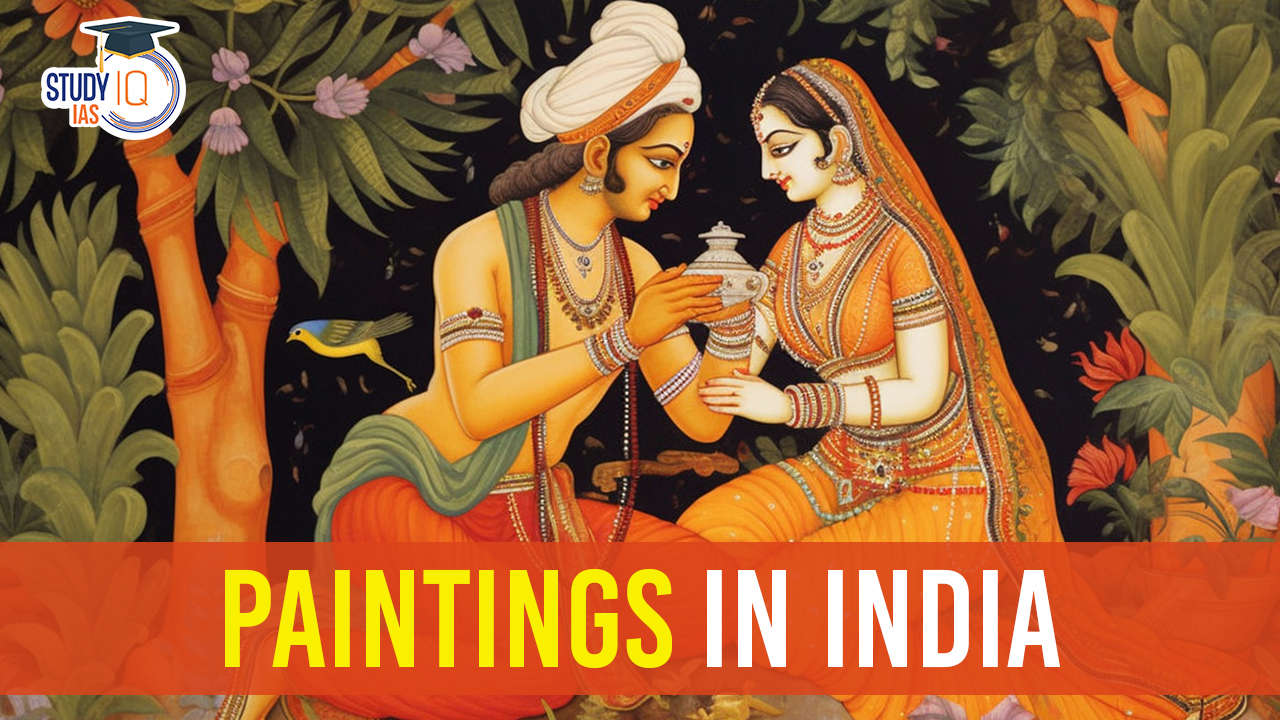
 UNESCO World Heritage Sites of India Lis...
UNESCO World Heritage Sites of India Lis...
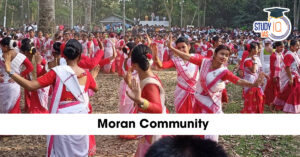 Moran Community of Assam, History, Langu...
Moran Community of Assam, History, Langu...
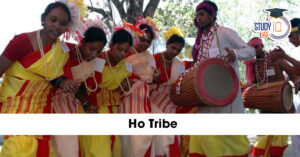 Ho Tribe: History, Culture, Language and...
Ho Tribe: History, Culture, Language and...
